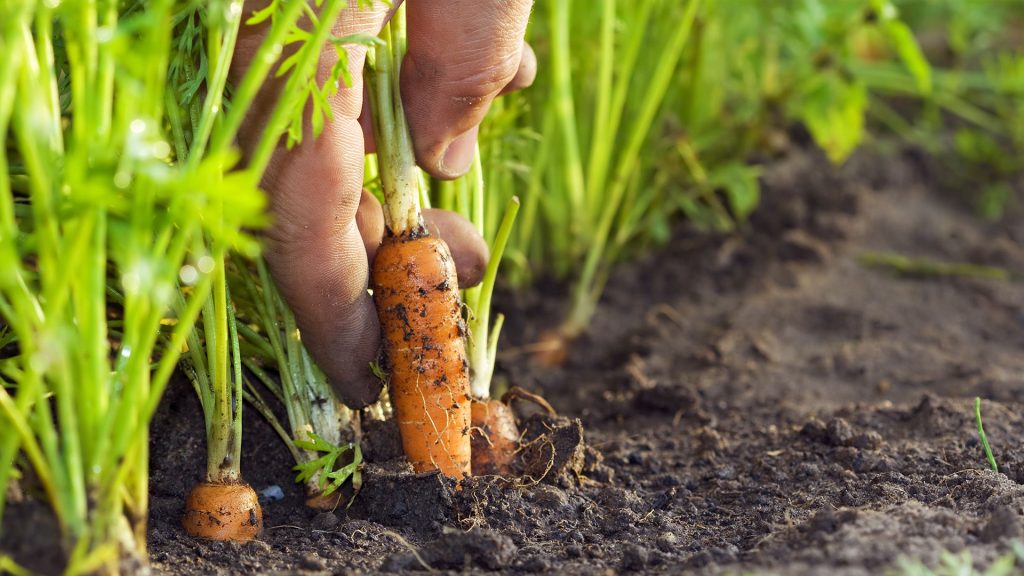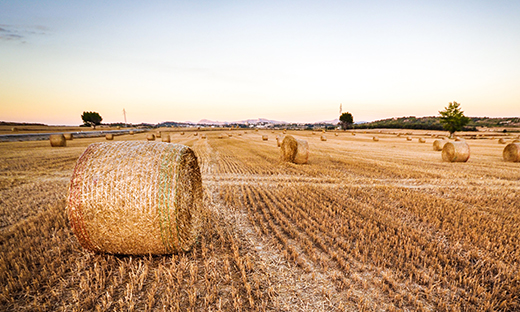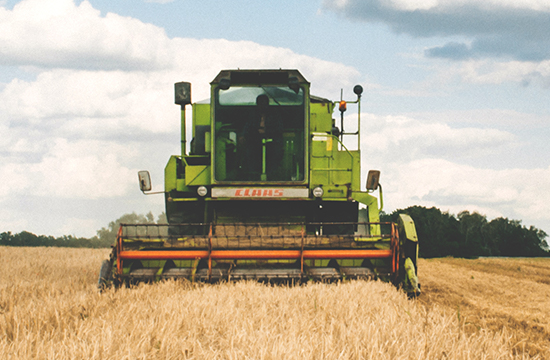+234 80 555 66677
support@ashogbonfarms.com
Abstract
After 20 years of neglect by international donors, agriculture is now again in the headlines because high food prices are increasing food insecurity and poverty. In the coming years, it will be essential to increase food productivity and production in developing countries, especially in Sub- Saharan Africa and with smallholders. This, however, requires finding viable solutions to a number of complex technical, institutional, and policy issues, including land markets, research on seeds and inputs, agricultural extension, credit, rural infrastructure, connection to markets, rural non-farm employment, trade policy and food price stabilization. This paper reviews what the economic literature has to say on these topics. It discusses in turn the role played by agriculture in the development process and the interactions between agriculture and other economic sectors, the determinants of the Green Revolution and the foundations of agricultural growth, issues of income diversification by farmers, approaches to rural development, and issues of international trade policy and food security, which have been at the root of the crisis in agricultural commodity volatility in recent years.

crisis, and financial crisis— and their aftermath. Food prices have spiked twice in a period of 4 years: the United Nations Food and Agriculture Organization (FAO) food price index peaked in June 2008, then hit another record high in March 2011. Drought, fires, and monsoon floods have destroyed harvests in many countries from Russia to Pakistan. In poor countries, this has led to hunger, worsening food insecurity, and vulnerability to poverty. …
There are two challenges related to agriculture. The first is the need to increase food productivity and production in developing countries, especially in Sub-Saharan Africa and with smallholder farmers. To achieve this, a number of problems need to be addressed: property rights, R&D for seeds and inputs, irrigation, fertilizer, agricultural extension, credit, rural infrastructure, storage, and connection to markets. The second problem is the volatility of food prices, often because of events outside the control of poor countries. An interconnected combination of steps could help ensure that the most vulnerable countries and people get the nutrition they need.1 The modest ambition of this paper is to review the economic literature on agriculture, focusing on the issues that are critical for agricultural productivity and poverty reduction.
In the first section of the paper, we discuss the role played by agriculture in the development process and the interactions between agriculture and other economic sectors. Agriculture contributes to both income growth and poverty reduction in developing countries—by generating income and employment in rural areas and providing food at reasonable prices in urban areas. The sector matters greatly in low-income countries, where about 60 percent of the labor force is employed in agriculture: it accounts for 25 percent of GDP (but only 9 percent in middle-income and 1 percent in high-income countries). Of the 5.5 billion people who live in developing countries, 3 billion live in rural areas Agriculture is the main source of livelihood for 86 percent of these rural households. Some 75 percent of poor people still live in rural areas and derive the major part of their income from the agricultural sector and related activities. Agriculture provides food, income, and jobs, and hence can be an engine of growth in agriculture-based developing countries and an effective tool to reduce poverty in transforming countries.2 Balancing agriculture and industry is an important—although difficult— dimension

On the consumption side, higher productivity in agriculture can increase the income of the rural population, thereby creating demand for domestically produced industrial output. Such linkage effects can increase employment opportunities in the rural non-farm sector, thereby indirectly generating rural income. Moreover, agricultural goods can be exported to earn foreign exchange in order to import capital goods. The importance of such linkages was further stressed by Singer (1979) and explicitly embodied in Adelman’s general equilibrium idea of ‘‘agricultural demand-led industrialization’’ (ADLI), according to which, because of production and consumption linkages, a country’s development strategy should be agriculture-driven rather than export-driven and increased agricultural productivity would be the initiator of industrialization. Moreover, emphasis should be placed on small-to-medium-size farmers because they are more likely to use domestically produced intermediate goods, as opposed to largescale producers who might import machinery and other inputs, which would weaken the linkages between agriculture and other sectors (Adelman, 1984). The
fact that there are important linkages between the traditional and modern sectors in developing countries makes agricultural growth an important instrument for decreasing poverty. The contribution to poverty reduction takes place directly, through the effects of agricultural growth on farm employment and profitability, and indirectly because increases in agricultural output induce job creation in upstream and downstream non- farm sectors as a response to higher domestic demand. Potentially lower food prices increase the purchasing power of poor consumers. The magnitude of these effects for poverty reduction depends on the specific circumstances of an economy. For example, if technological progress in the agricultural sector is labor-saving, farm employment might not necessarily increase (Irz et al., 2001).
Although most of the literature views agriculture as an active and dynamic economic sector, some authors reach quite different conclusions. Gollin (2010) notes that the large share of agriculture in many developing economies does not immediately imply that overall growth has to be based on an ADLI-type strategy. Matsuyama (1992) suggests that the relation between agricultural growth and overall economic growth depends on the openness of a country to international trade. Whereas agricultural growth goes hand in hand with economic growth in small, closed economies—where gains in agricultural productivity will lead to the linkage effect described above—the relation might be reversed in the case of an open economy. If the country has a comparative advantage in agriculture, openness to trade will draw resources away from the modern sector into agriculture, which might be less productive than industry. The importance of the degree of openness of a country was pointed out early on by proponents of ‘‘agriculture-first’’ approaches to development. For instance, Ranis and Fei (1961) acknowledge that imports could potentially substitute for domestic agricultural products. Adelman (1984) suggests that ADLI would work best for low-income countries that are not yet export driven; and Foster and Rosenzweig (2003) stress that the tradability of rural non- farm sector goods can have different implications. In a general equilibrium perspective, productivity gains in the agricultural sector have a negative impact on the tradable non-farm sector. This is because agricultural products as well as rural non-farm non-tradable have a relatively inelastic demand for labor, whereas tradable goods have more elastic labor demand. If wages increase due to greater agricultural productivity, factories producing tradable goods, which are assumed to be operated by external producers, will move to escape the higher wages. There is a vast literature, ranging from critical contributions that do not support ‘‘agriculture first’’ approaches to more recent ‘‘agro-pessimism’’ views. The latter are based on the observation that agriculture in developing countries might be the least productive sector in the economy. Dercon (2009) derives this conclusion from a two-sector model elaborated by Eswaran and Kotwal (1993). He explains that, in an open economy, in which both agricultural and modern-sector goods can be traded, linkages between the two sectors become less important for overall growth. As a result, there is less necessity to increase agricultural productivity to induce overall growth.

proportionately more (relative to GDP) than high-income economies from those trade- related policy reforms. Developing countries would gain nearly twice as much as richer economies by completing the reform process—with 72 percent of the prospective gains to developing countries coming from agricultural and food policy reform. In developing countries, net farm income (agricultural value added) is estimated to have been 5 percent higher in 2004 than it would have been without the reforms since the mid-1980s. If policies remaining in 2004 were removed, net farm income would rise by another 6 percent (far more than the proportional gain to J.-J. Dethier, A. Effenberger / Economic Systems xxx (2012) xxx–xxx 7 G Models ECOSYS- 380; No. of Pages 31 Please cite this article in press as: Dethier, J.-J., Effenberger, A., Agriculture and development: A brief review of the literature. Econ.Syst. (2012), doi:10.1016/j.ecosys.2011.09.003 nonagricultural households). These reforms could further alleviate global inequality and poverty, since three-quarters of the world’s extreme poor are in farm households in developing countries. One way to look at policy changes over the past 25 years would be to say that developing countries follow the example of higher-income countries in moving from anti to pro-farmer policies as they develop. The Anderson study shows that import-competing farmers in developing countries are being increasingly protected over time Agricultural production has been directly supported by subsidies to farm inputs such as fertilizers and irrigation in many developing countries, such as India. These policies generally benefit large farmers more than smallholders , that public policies that actively support agriculture, such as pricing or support to agricultural research and extension, are a necessary prerequisite for agricultural growth, and that agricultural market liberalization has not benefited small farmers due to market failures and distortions. Asia’s Green Revolution was supported by government interventions sustained for long periods, such as fertilizer subsidies that reduced prices to 25 percent of their world market price. For example, the 5 percent annual growth in Indonesia’s rice production over 1970–1988 was mainly
achieved by government pricing, research, and investments in the rice sector (Gonzales et al., 1993). But such large-scale public interventions put a heavy burden on government budgets, are not a good use of public funds and not sustainable over time. They also have other detrimental effects. For instance, the subsidization of fertilizer in Asia has led to misuse and soil degradation. Hence, although urban bias seems to be detrimental for agricultural growth because it fosters industry, agricultural market interventions are costly and may lead to mismanagement of resources.6 At least that was the conventional wisdom among economists and policymakers in the 1980s and 1990s. They thought that agricultural market interventions increased fiscal spending and could create macroeconomic problems. However, in recent years, there has been a resurgence of interest in these subsidies in Africa, together with the emergence of ‘‘smart subsidies’’, which are delivery systems intended to reduce the common problems facing subsidy programs. The most famous example is the Malawi Government Agricultural Inputs Subsidy Program, a voucher system. It is seen as an effective way of rationing and targeting access to subsidies to increase agricultural productivity; it provides opportunities for innovative public–private partnerships to develop input supply and demand systems; and it may lead to economic and social welfare gains. But the program is fraught with many practical and political problems and may lead to patronage and fraud. Moreover, the program is vulnerable to factors outside government control, including variations in international fertilizer and maize prices and weather (Dorward et al., 2008).

There have been major downsides, however. First, since only a few species of high-yield varieties of rice or wheat were grown, tens (if not hundreds) of thousands of seed varieties that existed prior to the Green Revolution are no longer being used. Increased crop homogeneity implies that seeds are more prone to disease and pests because there are not enough varieties to fight them. In order to protect these few varieties, pesticide use grew, with major negative environmental externalities. Second, at least if one adopts a Malthusian view of development, the increased amount of food production available worldwide has been an important cause of overpopulation. Between 1980 and 2004, the agricultural sector grew at an average rate of 2.6 percent worldwide, with two-thirds of this growth contributed by Asian economies. Agricultural yields in Asia increased at an average rate of 2.8 percent between 1961 and 2004. In Sub-Saharan Africa, the average rate of agricultural growth was 3 percent over the same period but growth per capita of the agricultural population (a broad measure of agricultural income) was 0.9 percent, less than half the growth rate in other regions. Moreover,
whereas agricultural growth during the Green Revolution in Asia was driven by intensification, agriculture in Sub-Saharan Africa has been growing mostly as a response to land expansion and yields have been stagnant. Since the potential for land expansion will soon be exhausted, further agricultural growth will have to come from increased yields.

As a consequence, several geographically separate revolutions will have to take place across Sub-Saharan Africa (Staatz and Dembele, 2007). The source of agricultural growth also matters for its impact on poverty reduction. Agricultural growth in East Asia has been achieved with technologies increasing labor productivity and has led to large reductions in poverty. By contrast, in Africa, where labor productivity gains in agriculture have been small and most growth has come from land expansion, poverty reduction has also been low. In order to understand past developments in agriculture and predict future ones, the mechanisms behind agricultural development and growth must be identified.8 According to Schultz (1964), many farmers remain poor not because they are ‘‘backward’’ but because their government provides them with few technical and economic possibilities. Schultz stressed the importance of making inputs available to farmers (and increasing the capacity of industry to supply these inputs), generating new locally specific knowledge, and improving education about new seeds and technologies via extension services. Schultz’s model did not specify which institutions could influence this process and facilitate the adoption of new technologies by farmers. This shortcoming was addressed by Hayami and Ruttan (1971),
who developed a model of induced innovation to explain the factor bias of technological change. The causal sequence begins with changes in relative factor scarcities leading to changes in relative factor prices (under the assumption that markets actually exist and work). Prices, in turn, guide technological advances toward saving on the factors that become relatively more expensive. Since agricultural research is largely a public good, the government needs to respond to market signals and factor endowments by allocating funds to alternative research programs. This occurs partly in response to producer demands for technologies that allow them to save on the factors that are becoming relatively more expensive and partly as a response to changing resource constraints, such as environmental challenges (de Janvry and Dethier, 1985). In comparing the long-run history of technological change in Japanese and U.S. agriculture, for instance, Hayami and Ruttan find that, in labor-abundant but land-scarce Japan, technology has been mainly land-saving, allowing for a rapid increase in the productivity of land. In the United States, where land was abundant and labor scarce, technology has been mainly labor-saving, allowing rapid increases in the productivity of labor.

Binswanger-Mkhize and McCalla, 2010). These differences call for more regional specific orientations in agricultural research, which take local conditions and constraints into account. In Africa, this has been addressed by both national as well as international research organizations. In 2006, for example, the CGIAR spent 48 percent of its total budget on activities directly related to Sub-Saharan Africa. But the contribution of CGIAR research to total yield growth has been much smaller in Sub-Saharan Africa than in other regions (BinswangerMkhize and McCalla, 2010). At the regional level, new institutions have been developed, such as national agricultural research systems (NARS) and the New Partnership for Africa’s Development (NEPAD). NEPAD, for example, has set a target of 6 percent agricultural growth in order to encourage public spending in this sector. Nevertheless, only a few African countries have reached that goal, whereas public spending in general has been low (during the past 30 years, 5–7 percent of the total national budget) and has fallen short of equivalent spending in other parts of the world (Fan et al., 2009). This is in stark contrast to potential returns to such expenditures. As reported by Fan et al. (2009), in some African countries, recent expenditures have been very successful in increasing agricultural productivity: one local currency unit spent on agricultural R&D has increased agricultural productivity by about 12 local currency units in Uganda and Tanzania. For Sub-Saharan Africa in general, the return to agricultural R&D and extension is estimated to be around 35 percent (IEG, 2011).
Future research will need to have a regional focus and target specific needs. Regional initiatives— such as NEPAD—are an important part of such a regional strategy. However, the mode of research is also a vital factor. Engaging farmers in such efforts, for example through participatory plant breeding, can provide valuable information to the research process. According to Ceccarelli and Grando (2007), this approach is different from normal plant breeding in three ways: the testing and selection of seeds take place on the farm, the farmers are involved in the decision making, and it can be implemented at many different locations. The participation of farmers is expected to increase the rate of adoption of new seeds. An important agricultural R&D question is what recent biotechnology advances can do for African agriculture and whether they are the route to the continent’s Green Revolution. Poor farmers might benefit especially from transgenic food crops because they are particularly disease-resistant. Estimations by Edmeades and Smale (2006) show that transgenic bananas would mostly be adopted by poor, subsistence-oriented farmers and are therefore a ‘‘pro-poor’’ variety. So far, however, transgenic crops are grown commercially only in South Africa (Eicher et al., 2006), where in 2006 transgenic white maize covered 44 percent of the total white maize area (World Bank, 2007).
